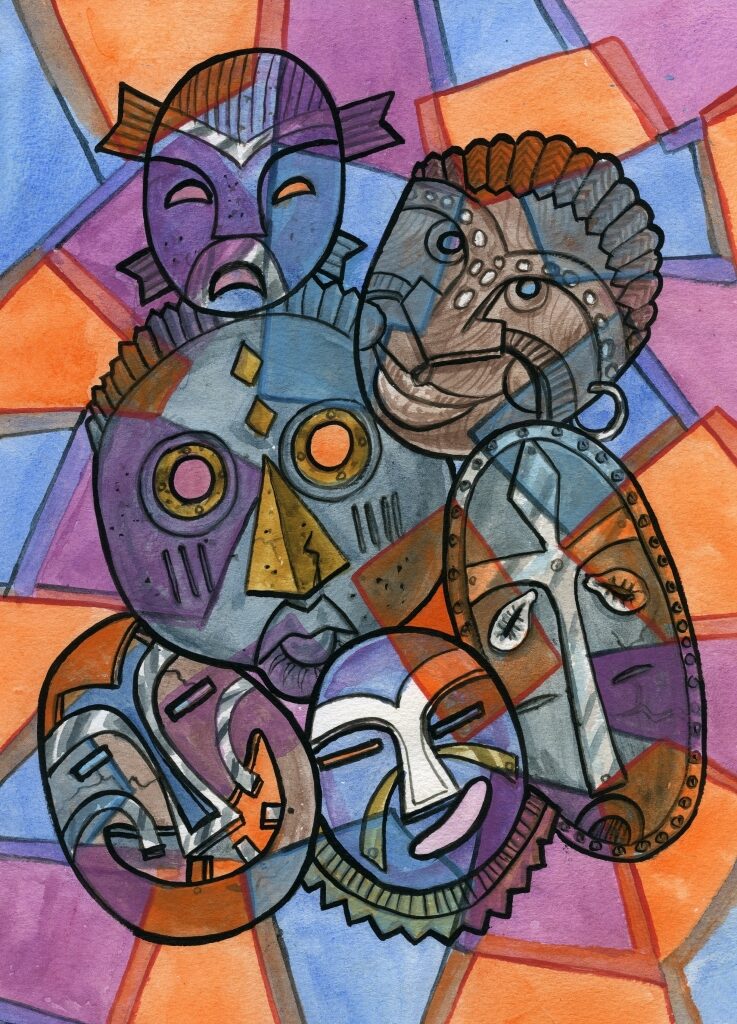Charles Dey

ARTIST STATEMENT
As a child, I used to draw on open spaces: tiny shreds of paper, bedroom walls. I’d wake up, chasing stories all around me: the bustle of the busy open market; the tiny cloud of dust that left the road; the constant flow of people passing by me – the sunlight pouring in to greet the morning. My work is my reflection of these moments: life that I have witnessed over time. I thrive in peeling back the hidden layers, filling in life’s movement as it whispers. I get inspired searching for the root – those elements that seem to go unnoticed. This is my foundation as a painter and in my larger vision as an artist.
At night I sit reflecting on my canvas, searching for the muted undertones. I listen to the rhythm found in jazz or in the syncopation of a chord. The colors that I use are juxtaposed, almost like a quiet conversation: a voice that starts out low; then finds a pattern. My tools in many ways are like my compass. My brush helps me create a storyboard: blended scenes – emotions sewn together, gently drenched in hues of watercolor. Most of what I paint comes from traditions: days I spent exploring life in Ghana; the streets I walk down now in urban cities of America – people that I meet along the way. I find the planted seed inside my subjects – the steady pulse that flows through inner channels. I often show that voice through outward symbols, adding in a link to past and present.
My work projects a world always evolving – a world where vivid contrasts blend together. Depending on the concept or my mood, I may decide to solely work with charcoal; other times I choose to use acrylic, departing from my theme of watercolor. Regardless of the texture I decide on, I aim to show the softness in the detail: the glimmer in a squinted open eye, the titled head that hides a slight discomfort – the legs that stretch to show a weeping soul. Every gesture bleeds from different angles. I revel in highlighting these perspectives.
In my latest piece, “Dot Com Blues,” I illustrate my take on mobile media – the essence of a world in constant motion, which I achieve through color saturation. I channel how the signals link together – to ways we stretch beyond our narrow borders, reaching out – defining current trends. Through this piece and my pursuit of advertisement, I hope to show the memory in art: the way the scenes connect to tell a story – the stories that when told bind us together, despite the ways our lives pull us apart.




